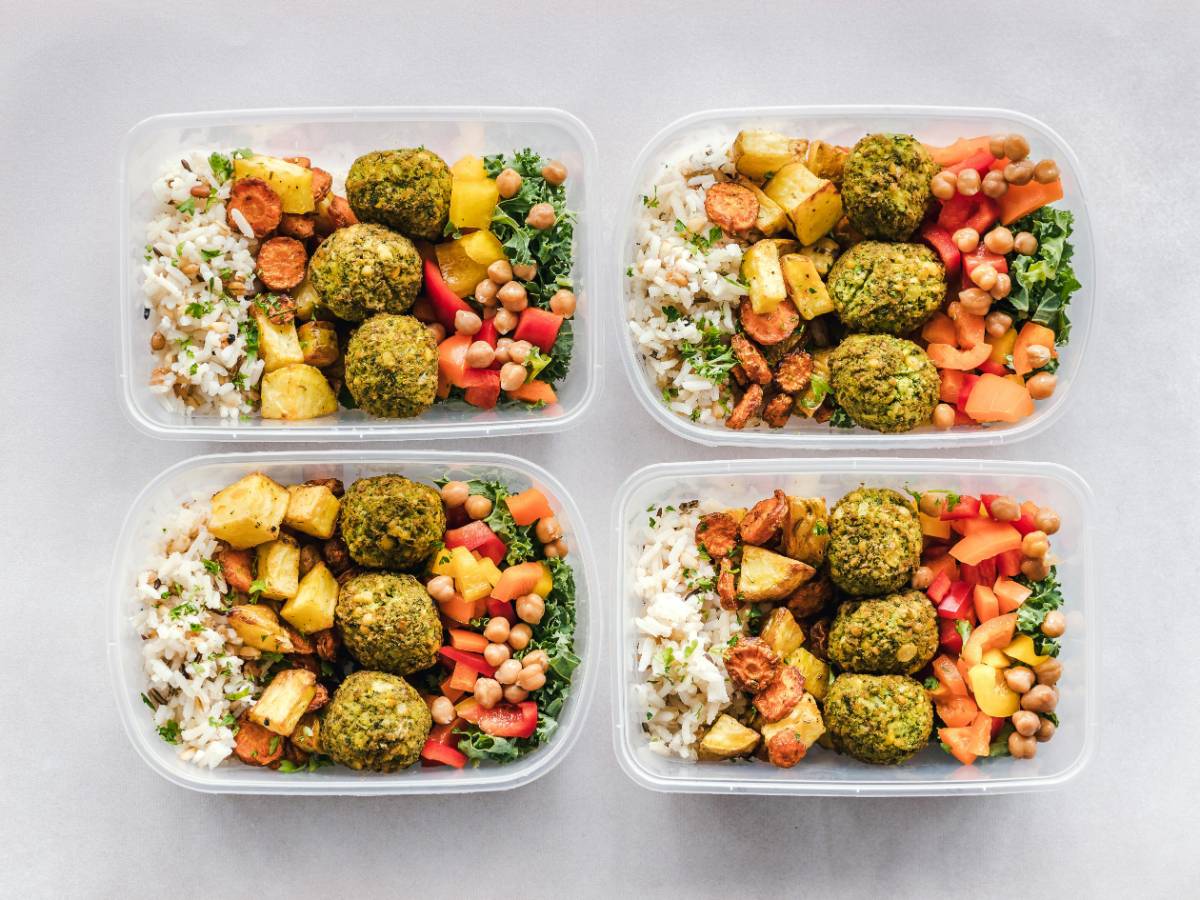How to Incorporate Healthy Foods into Your Pre- and Post-Workout Meals

3 min read
|27 May 2025Incorporating healthy foods into your pre- and post-workout meals is crucial for optimizing performance, enhancing recovery, and supporting overall fitness goals. The right nutrients can provide energy, improve endurance, and aid in muscle repair. Here’s a guide on how to effectively include healthy foods in your workout meals to maximize their benefits.
Pre-Workout Nutrition
Eating the right foods before your workout can provide the necessary energy and fuel to enhance your performance. Focus on a balance of carbohydrates, proteins, and healthy fats to sustain energy levels and support muscle function.
1. Carbohydrates for Energy
Carbohydrates are the primary source of energy for your workouts. Opt for complex carbohydrates that provide sustained energy, such as whole grains, oats, sweet potatoes, and fruits. These foods release glucose slowly into the bloodstream, helping maintain stable energy levels throughout your exercise session.
2. Protein for Muscle Support
Including a moderate amount of protein in your pre-workout meal helps prepare your muscles for exercise and supports muscle repair. Good sources of pre-workout protein include lean meats, Greek yogurt, eggs, and plant-based proteins like beans and lentils. Aim for protein-rich foods that are easily digestible and won’t cause discomfort during your workout.
3. Healthy Fats for Sustained Energy
Healthy fats can provide a longer-lasting source of energy. Incorporate sources such as avocados, nuts, seeds, and olive oil into your pre-workout meal. These fats are absorbed slowly, which can help maintain energy levels during extended workout sessions.
4. Timing Your Pre-Workout Meal
Consume your pre-workout meal about 1 to 2 hours before exercise to allow your body enough time to digest and convert the food into usable energy. If you’re short on time, a smaller snack 30 minutes before your workout can also provide a quick energy boost. Consider options like a banana with a spoonful of almond butter or a small smoothie with fruit and yogurt.
Post-Workout Nutrition
After your workout, your body needs nutrients to repair muscles, replenish glycogen stores, and recover from physical exertion. A balanced post-workout meal with carbohydrates and protein is essential for optimal recovery.
1. Carbohydrates for Glycogen Replenishment
Replenishing glycogen stores is crucial after exercise, especially if you’ve had a high-intensity or long-duration workout. Focus on carbohydrate-rich foods such as brown rice, quinoa, whole-grain bread, and fruits. These foods help restore glycogen levels and support recovery.
2. Protein for Muscle Repair
Post-workout protein is vital for muscle repair and growth. Aim to include a high-quality protein source in your meal, such as lean chicken, fish, tofu, or a protein shake. Consuming protein after exercise helps rebuild muscle tissue and enhances recovery.
3. Hydration for Replenishment
Rehydration is a critical aspect of post-workout recovery. Drink plenty of water to replace fluids lost through sweat. For longer or more intense workouts, consider adding an electrolyte-rich drink or coconut water to help restore essential minerals and prevent dehydration.
4. Timing Your Post-Workout Meal
Ideally, eat your post-workout meal within 30 to 60 minutes after exercising to maximize recovery. This time frame helps your body efficiently absorb nutrients and start the repair process. If you’re unable to have a full meal, a protein shake or smoothie with fruit and protein powder can be a convenient alternative.
Incorporating these healthy foods into your pre- and post-workout meals can enhance your exercise performance and recovery. By focusing on balanced nutrition, you can support your fitness goals, improve endurance, and achieve better results from your workouts. Tailor your meal choices to fit your individual needs and preferences, and remember to stay hydrated for optimal overall health.
MORE ARTICLES

3 min read | 02 Apr 2025
The Benefits of Dietary Fiber for Digestive Health
Dietary fiber is an essential component of a healthy diet that plays a crucial role in maintaining digestive health. Found in plant-based foods, fiber is known for its many health benefits, including promoting regular bowel movements, supporting gut health, and reducing the risk of chronic diseases. In this article, we’ll explore the various benefits of dietary fiber for digestive health and provide tips for incorporating more fiber into your diet.

2 min read | 01 Apr 2025
The Impact of Caffeine and Alcohol on Hydration
Hydration is essential for maintaining overall health, supporting physical performance, and ensuring proper bodily functions. However, certain beverages can have a significant impact on hydration levels. Caffeine and alcohol, two commonly consumed substances, can affect your body’s fluid balance in different ways. In this article, we’ll explore how caffeine and alcohol influence hydration and provide tips for managing their effects.

4 min read | 31 Mar 2025
How to Incorporate Hydrating Foods into Your Diet
Hydrating foods are an excellent way to boost your fluid intake and support overall hydration. These foods not only help keep you hydrated but also provide essential nutrients and contribute to your overall well-being. In this article, we'll explore how to incorporate hydrating foods into your diet and offer practical tips for making them a regular part of your meals and snacks.

2 min read | 30 Mar 2025
Hydration Tips for Active Lifestyles
Staying hydrated is crucial for anyone leading an active lifestyle, whether you're a casual exerciser or a professional athlete. Proper hydration helps maintain energy levels, supports physical performance, and aids in recovery. In this article, we'll explore essential hydration tips to help you stay well-hydrated and optimize your performance during physical activities.

4 min read | 29 Mar 2025
Best Hydrating Beverages Beyond Water
While water is the gold standard for hydration, there are many other beverages that can effectively keep you hydrated and offer additional health benefits. Incorporating a variety of hydrating drinks into your daily routine can add flavor, nutrients, and enjoyment to your hydration habits. In this article, we'll explore some of the best hydrating beverages beyond water, including their benefits and how they can support your overall well-being.

5 min read | 28 Mar 2025
Signs of Dehydration and How to Prevent It
Dehydration occurs when your body loses more fluids than it takes in, leading to an imbalance that can impact overall health. Recognizing the signs of dehydration and taking preventive measures is crucial for maintaining optimal well-being. In this article, we'll explore common signs of dehydration and provide practical tips for preventing it.
RECENT POSTS
1
How to Keep Your Skin Hydrated All Day
3 min read | 09 Apr 20252
Tips for Managing Eczema on the Body
4 min read | 08 Apr 20253
How to Create a Relaxing Bath Routine
4 min read | 07 Apr 20254
The Role of Essential Oils in Body Care
5 min read | 06 Apr 20255
Best Ingredients for Soothing Dry Skin
3 min read | 05 Apr 20256
How to Prevent and Treat Body Acne
5 min read | 04 Apr 2025MORE POSTS

The Role of Protein Supplements in Weight Loss
5 min read | 21 Apr 2025
Popular Weight Loss Supplements: What You Need to Know
5 min read | 20 Apr 2025
Understanding the Link Between Water and Metabolism
3 min read | 19 Apr 2025
How to Increase Water Intake Throughout the Day
4 min read | 18 Apr 2025
The Impact of Caffeinated and Sugary Drinks on Hydration
5 min read | 17 Apr 2025
